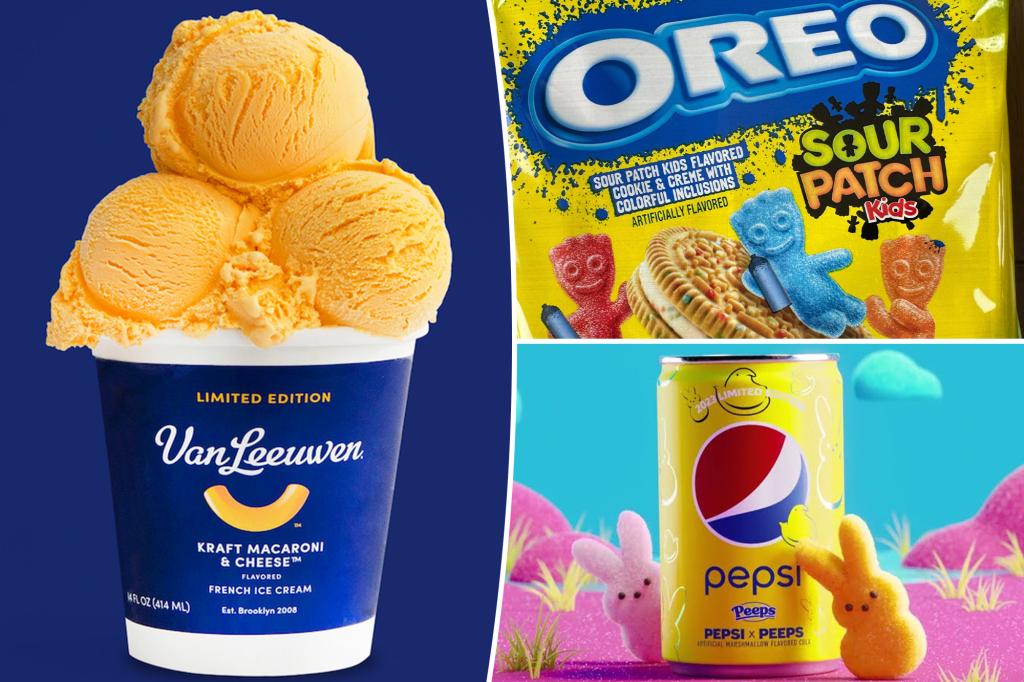The trend of surprising flavor combinations in food and beverages is on the rise, with companies like Van Leeuwen Ice Cream, Hershey, and Lay’s introducing unique and unexpected flavors like Hidden Valley Ranch ice cream, pink lemonade Kit Kats, and Rooty Tooty Fresh n’ Fruity potato chips. These limited-time flavors are often developed in response to evolving consumer tastes and the need for brands to stand out on crowded store shelves. Despite their novelty, some of these flavors end up becoming permanent fixtures due to their popularity.
Companies like Mondelez International, known for brands like Oreo, are embracing the trend of unusual flavor combinations with products like Sour Patch Kids Oreos. Food companies are taking more risks and exploring a wider range of flavors to appeal to consumers who are looking for a variety of taste experiences. The process of developing these unique flavors can take up to a year and the products are typically only available for a limited time before being replaced with new offerings.
Social media trends and the influence of Generation Z are driving innovation in the food and beverage industry. Young consumers are more diverse and adventurous in their tastes, making them receptive to new and unusual flavor combinations. Chefs and food companies are experimenting with Mexican, Korean, and Japanese flavors to cater to this demographic and stay ahead of emerging food trends. The willingness of Generation Z to try new flavors is pushing companies to explore more creative options at a faster pace than ever before.
Combining unique flavors can help boost brands by attracting new customers and encouraging existing ones to try other products. For example, a collaboration between brands like Peeps and Pepsi can create a fun and modern image for the companies involved. While not all oddball pairings are successful, companies are willing to take risks to capture consumer attention and create memorable experiences. The goal is to build associations in consumers’ minds that make the brands stand out and stay relevant in a competitive market.
While some surprising flavor combinations like Kraft Macaroni and Cheese ice cream have been successful, others like Brach’s Turkey Dinner Candy Corn have faced challenges due to their lower “eat-ability” factor. Consumers are looking for flavors that are enjoyable and offer a positive experience, even when they are trying something new and unexpected. Companies are closely monitoring social media trends to understand what flavors are popular and adapting their product offerings to meet consumer demand for variety and unique taste experiences.
Overall, the trend of surprising flavor combinations in food and beverages is driven by evolving consumer preferences, the influence of social media, and the desire for brands to stand out in a competitive market. Companies are taking creative risks and experimenting with a wide range of flavors to cater to diverse consumer tastes and stay relevant. While not all flavor combinations are successful, the trend towards unusual and unique flavors is likely to continue as consumers seek out new and exciting taste experiences.


